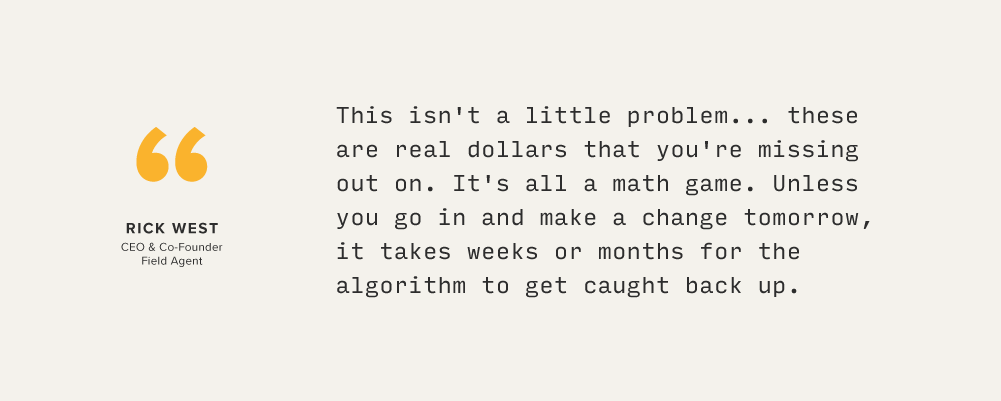
On-Demand Webinar: Understanding On-Shelf Availability
These days, no news is good news when it comes to the supply chain.
And, lately, the news has been impossible to avoid: Covid, labor shortages, inflation, geopolitical conflict, heck, even the blockage of the Suez Canal have all wreaked havoc on the supply chain and, by extension, on-shelf availability (OSA).
Out of stocks. Gaps on shelves. Missing facings. Lost sales. Lighter carts.
This is where supply chain issues become a tangible and daily frustration for shoppers, and a drain on sales for retailers and brands.
So, what's a brand to do? How should brands, like yours, think about OSA today, and what are some best practices for battling out of stocks and phantom inventory?
Field Agent CEO and co-founder Rick West recently sat down with SupplyPike's Stacy Tan to discuss how OSA continues to plague the industry, and how brands can fight back.
They also discussed Field Agent's March 2022 OSA audit of three SKUs across 85 Walmart Supercenters—where were looked for out of stocks and phantom inventory, specifically.
Watch their lively conversation below, and read on for a few key takeaways.
Taking Stock: 5 Takeaways from the OSA Webinar
1. There's never been a more critical moment to deal with inventory issues
No doubt about it: retailers and brands (and their shoppers) are taking hits left and right. "Every other word today is tied to supply chain," Rick said, "even inflation and global conflict."
One question is top of mind for every brand: Is my product in stock?
For brands, the effects of supply chain disruption and phantom inventory can be enormous. A recent Field Agent OSA audit, conducted in partnership with SupplyPike, found that about 20% of SKU-store combinations were unavailable for purchase (for the three products audited).
2. Phantom Inventory may be haunting your sales—without your knowledge
It's easily overlooked, but phantom inventory may be sucking the life out of your sales.
In essence, phantom inventory occurs whenever a retailer's inventory system shows stock that, due to shrink, damage, supply chain issues, etc., isn't actually available for purchase.
Worst of all, phantom inventory can happen without your knowledge.

Unfortunately, when phantom inventory cuts your sales, your forecast is suppressed. That means fewer orders, and further diminishes sales. "This isn't a little problem," Rick said. "These are real dollars that you're missing out on... Unless you go in and make a change tomorrow, it takes weeks or months for the algorithm to get caught back up."
3. Slow-moving SKUs? Watch them closely.
With a high-volume SKU like a popular detergent brand, the retailer and the manufacturer will be quick to notice if the product simply stops selling.
Not so with slow-moving SKUs that might sell once or twice on a given day at a given store. Issues with OSA might go undetected for weeks, because it's harder to spot a problem.
"You run the risk of losing your tag and having a really big problem," Rick said.
4. The grace period on out-of-stocks is over

5. Know the score. With Data.
In the struggle against supply chain and OSA issues, data helps brands fight back.
With both software analytics like those provided by SupplyPike, and "boots on the ground," operational confirmation like those in the Field Agent Marketplace.
Such tools help brands to proactively guard against and fix out of stocks, phantom inventory, and other threats to on-shelf availability.
Today, you'd agree, that's never been more important.
See Shelves as Shoppers See Them
Field Agent's suite of auditing solutions gives brands near-real time visibility into stores everywhere—so you can see exactly what shelves look like.
With just a few clicks, in just a few minutes, you can launch an auditing solution that will reveal the conditions of store shelves, as the shoppers themselves are seeing them.
Click below to explore our on-demand auditing solutions.
Mobile Research, Retail Audit, Out of Stocks, Phantom Inventory

